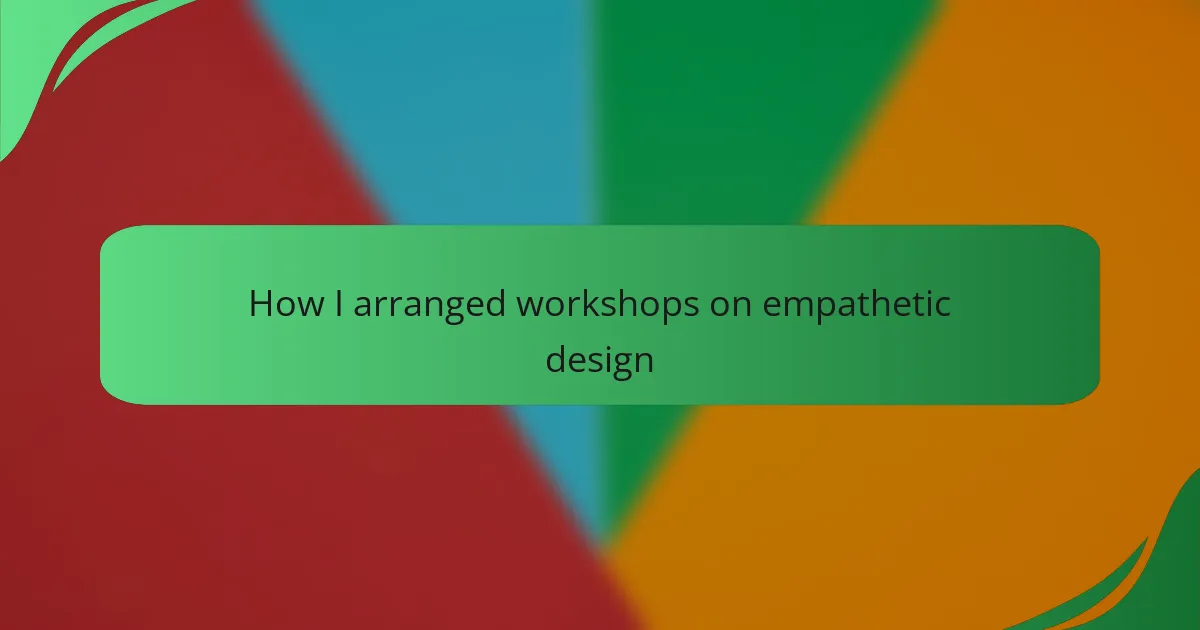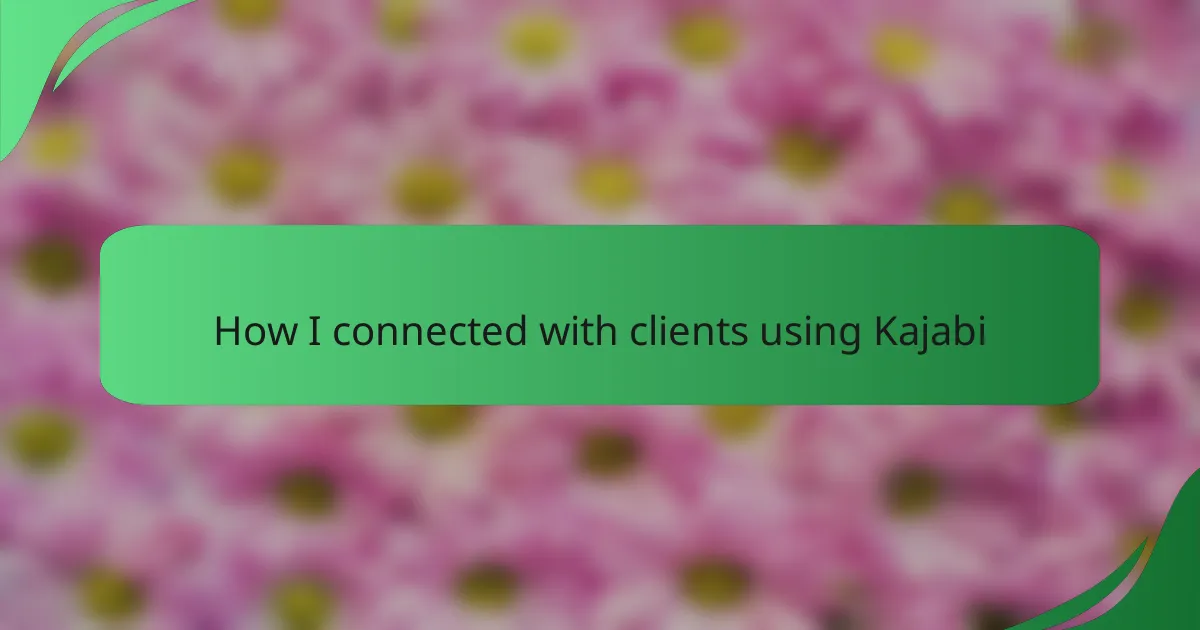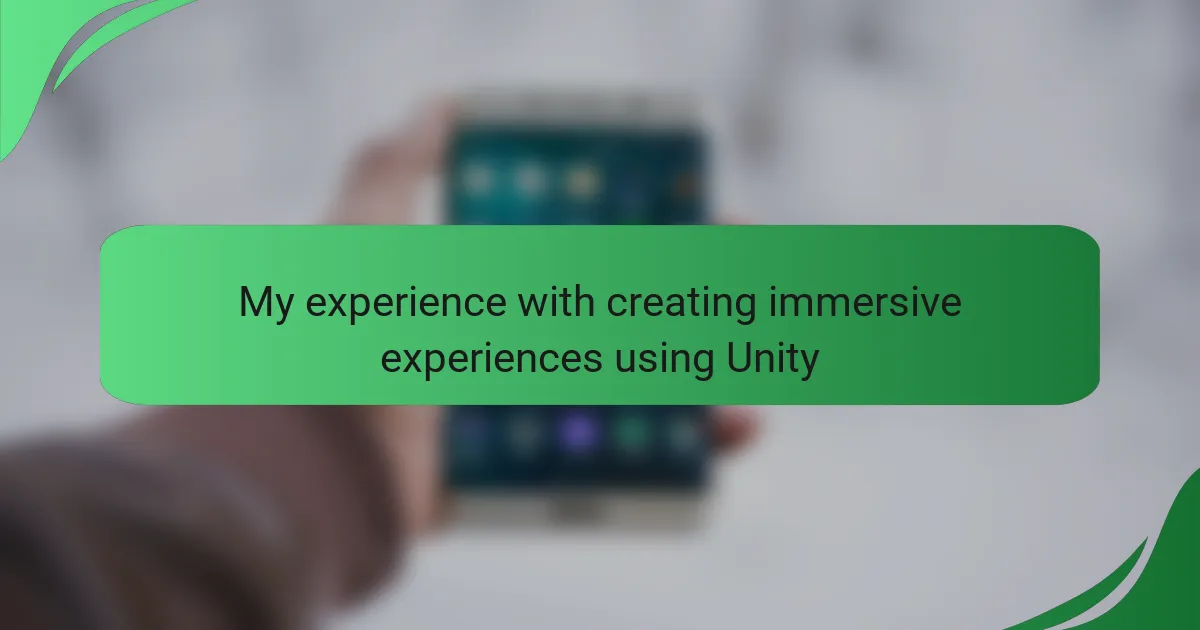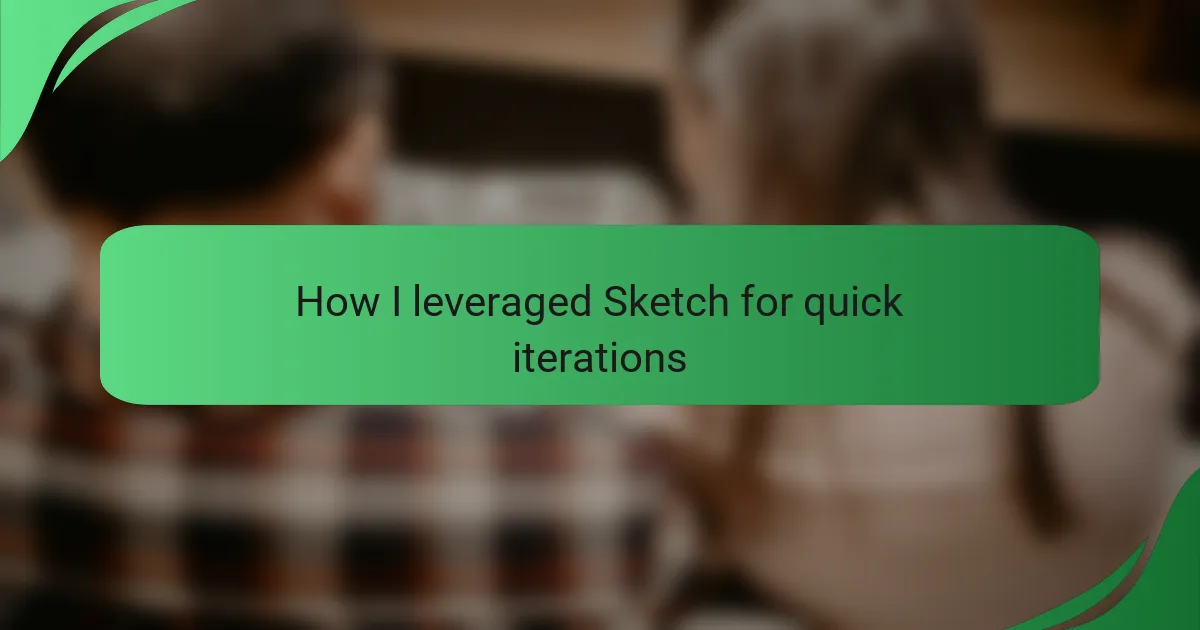Key takeaways
- Empathetic design emphasizes understanding user emotions and experiences, resulting in more relevant solutions compared to traditional design methods.
- Effective interface interaction design enhances user satisfaction by prioritizing usability and accessibility, making technology more human-centered.
- Key principles of empathetic design include active listening, diversity in perspective, and emotional resonance, fostering deeper insights into user needs.
- Successful workshops rely on clear objectives, engaging facilitation techniques, and measuring success through participant feedback and practical application of learned strategies.
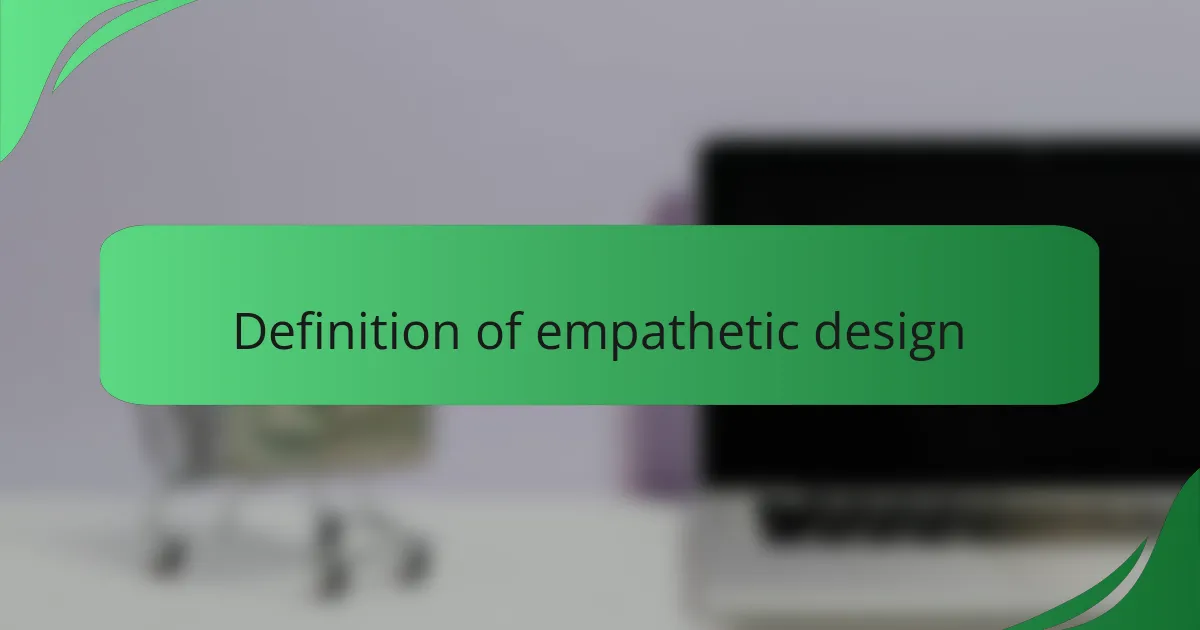
Definition of empathetic design
Empathetic design revolves around the idea of understanding the emotions, needs, and experiences of users to create more meaningful and human-centered products. From my experience, when designers take the time to put themselves in users’ shoes, they often uncover insights that lead to innovative solutions. I remember a workshop where participants really connected with real stories shared by users, transforming their perspective on design challenges.
To illustrate the essence of empathetic design, here’s a comparison table that highlights its key attributes against traditional design approaches.
| Attribute | Empathetic Design | Traditional Design |
|---|---|---|
| User Focus | Deep understanding of users’ feelings and experiences | General assumptions about user needs |
| Research Approach | Qualitative methods, like interviews and observations | Quantitative metrics and user testing |
| Outcome | More relevant and emotionally resonant solutions | Functionality and efficiency |
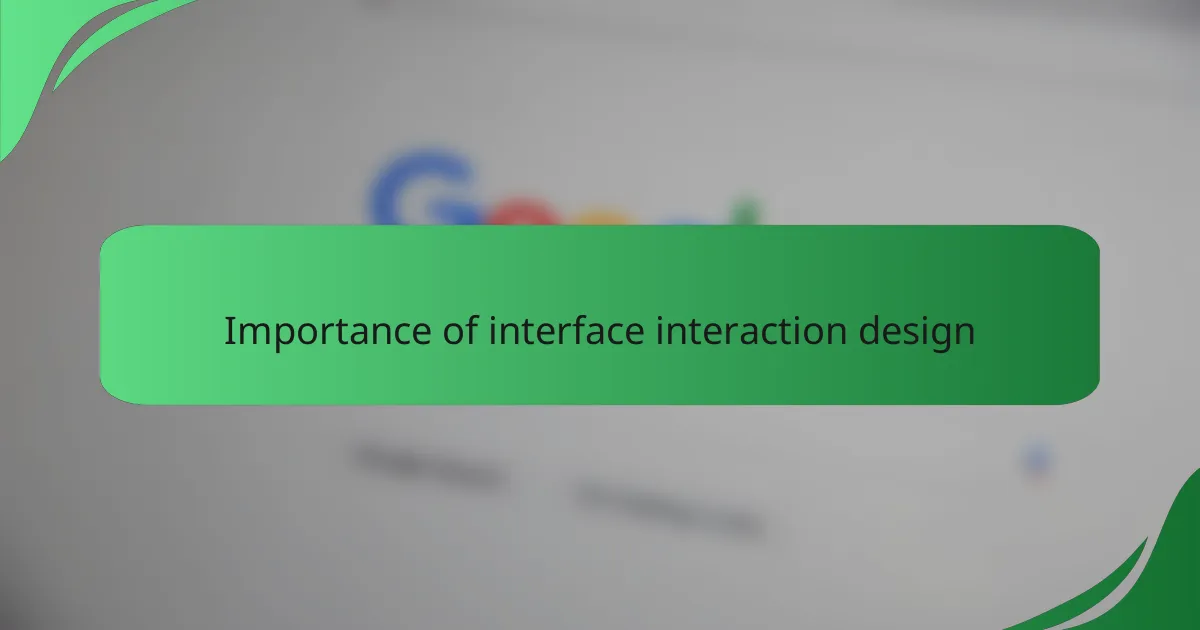
Importance of interface interaction design
Interface interaction design is crucial because it shapes how users connect with technology on an emotional level. I’ve often found that when interfaces are intuitive and responsive, users feel a sense of control and satisfaction that enhances their overall experience. Have you ever navigated a beautifully designed app and felt that instant click? That’s the power of thoughtful interaction design at work.
Moreover, effective interface interaction design doesn’t just focus on aesthetics; it prioritizes usability and accessibility. During a recent workshop, I witnessed how a group of designers transformed their projects by applying simple yet impactful design principles. They learned to consider individuals with varying abilities, which opened their eyes to a much broader audience and fostered inclusiveness.
Ultimately, the importance of interface interaction design lies in its ability to make technology more approachable and human-centered. I’ve seen firsthand how a well-designed interface can turn frustration into delight, enabling users to engage more deeply with their digital interactions. Isn’t it fascinating how small adjustments can lead to such significant changes in user experience?

Key principles of empathetic design
Empathetic design is all about understanding the users’ feelings and experiences, which I find crucial when crafting interfaces. When I arranged workshops on this topic, I encouraged participants to step into the users’ shoes, relaying stories of users struggling with technology. The more we share these experiences, the deeper our insights into the emotional and functional needs of our users become.
During these sessions, certain principles emerged as essential to empathetic design:
- User-Centered Focus: Always prioritize the users’ needs and experiences.
- Active Listening: Engage with users to fully understand their perspectives.
- Iterative Feedback: Allow users to provide input throughout the design process.
- Diversity in Perspective: Acknowledge that different backgrounds shape unique user experiences.
- Emotional Resonance: Design with empathy that elicits emotional connections and understanding.
By applying these principles, I witnessed a transformation in how participants approached their designs, cultivating a more inclusive and considerate mindset.
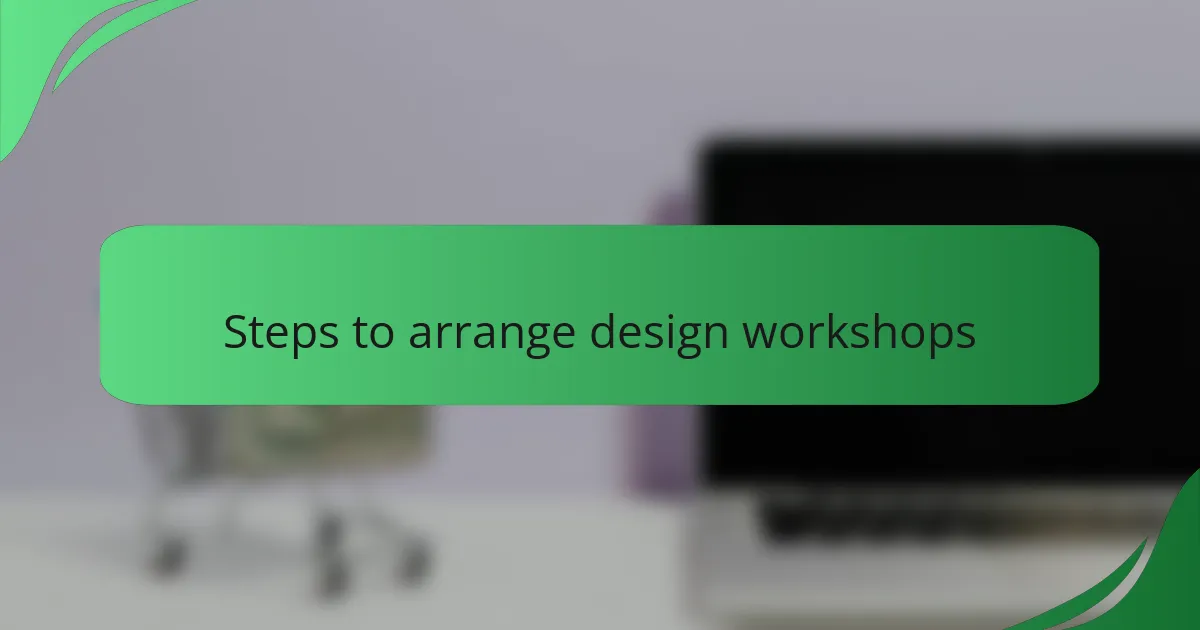
Steps to arrange design workshops
Arranging design workshops involves several key steps that ensure the process is smooth and effective. From my experience, the first step is clearly defining the purpose of the workshop. Think about what you want the participants to gain—maybe it’s a focus on user-centered design or collaborative brainstorming. I once conducted a workshop centered on empathetic design for a diverse group of participants, which truly highlighted the importance of clear objectives.
Next, I found that logistics matter just as much as content. This includes selecting an appropriate venue and ensuring all necessary materials are ready beforehand. I always create a checklist to help me stay organized and focused, which brings a sense of calm in what can be a hectic environment.
Here’s a quick bullet list of steps to help you arrange effective design workshops:
- Define the workshop goals and objectives.
- Identify your target audience and their needs.
- Select a suitable venue that encourages engagement.
- Prepare materials and equipment well in advance.
- Create an agenda that balances information and hands-on activities.
- Promote the workshop to ensure good attendance.
- Gather feedback post-workshop for continuous improvement.
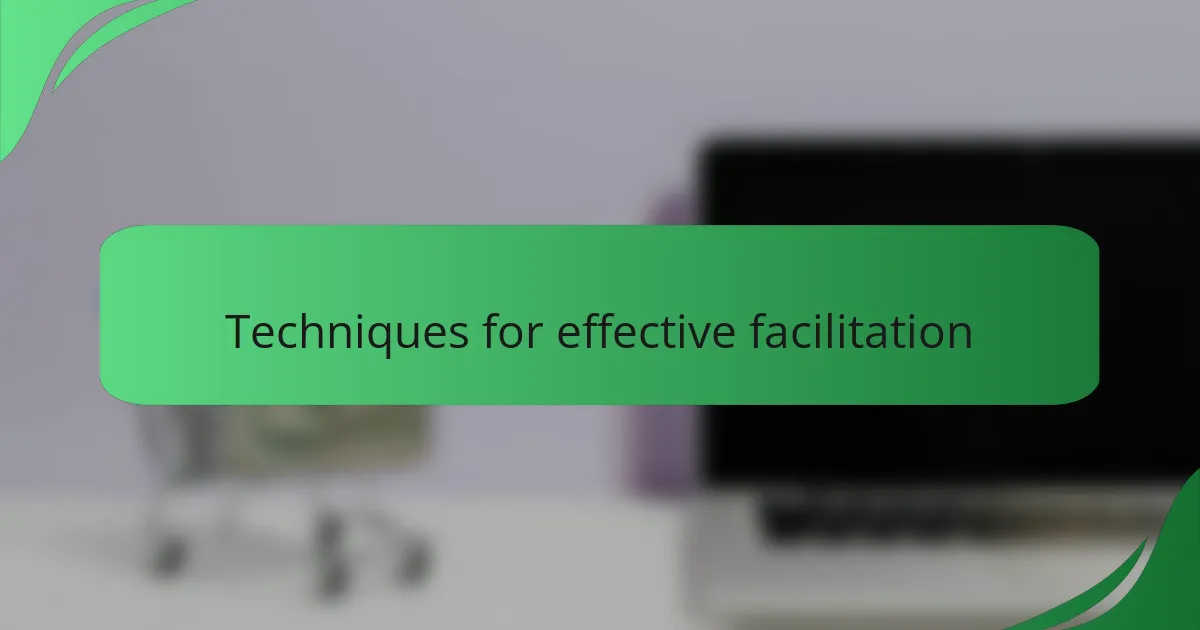
Techniques for effective facilitation
Effective facilitation is key to a successful workshop, especially when diving deep into empathetic design. I’ve always found that creating a safe and open environment encourages participants to share their thoughts freely. When I facilitated a workshop on this topic, I noticed how simple icebreakers transformed the group’s dynamics. They bonded over shared experiences, opening up channels for richer discussions.
Engaging participants through active participation is another crucial technique. Instead of simply lecturing, I often use hands-on activities to immerse everyone in the experience. For instance, I once divided participants into small groups, asking them to role-play various user scenarios. This exercise not only sparked creativity but also allowed them to feel the challenges users face firsthand. Doesn’t it make sense that when we experience something ourselves, we better understand it?
Additionally, I always encourage reflection during and after the workshop. After each activity, I set aside time for participants to share their insights and feelings about what they experienced. This practice fosters deeper learning and helps solidify their understanding of empathetic design principles. I remember a participant expressing how their perspective shifted dramatically simply by discussing their emotions connected to user experiences. It’s these moments that truly underscore the power of effective facilitation.
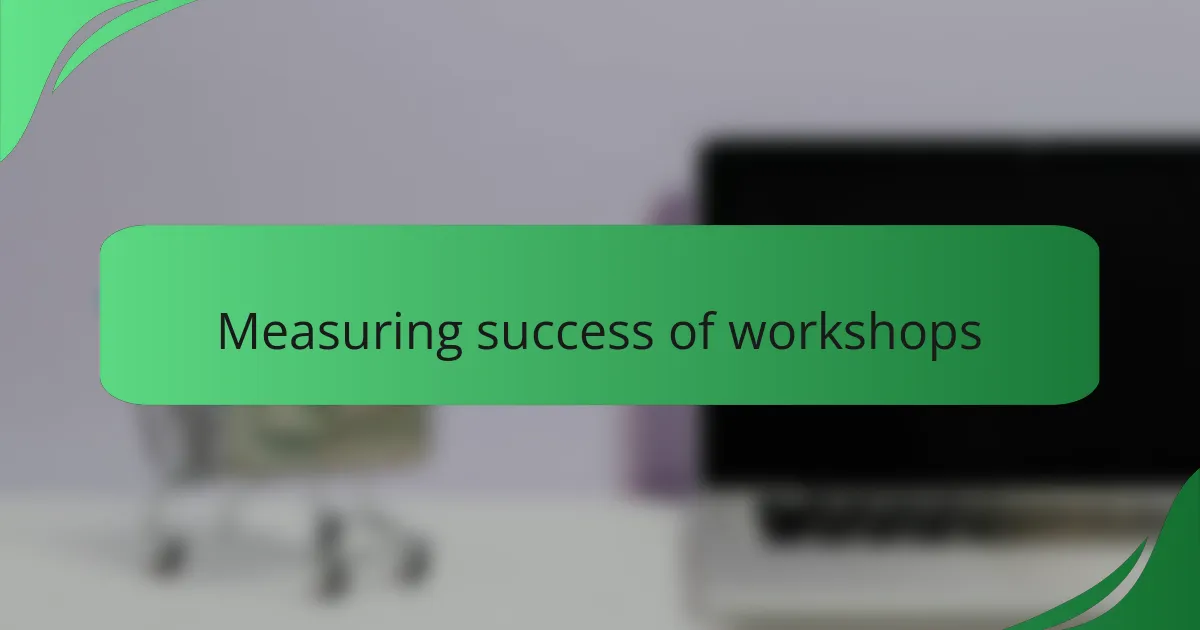
Measuring success of workshops
Measuring the success of my workshops on empathetic design has been a revealing experience. I found that participant feedback was invaluable and often reflected genuine moments of insight. For instance, one participant shared how the techniques taught helped her reframe a project, making it more user-centered. It’s these anecdotes that highlight the emotional connection formed throughout the sessions.
Another aspect I focused on was the practical application of what was taught. Watching participants implement the strategies in real-time was incredibly rewarding. It’s one thing to teach theory, but seeing it come to life in their projects confirms the impact of the workshop.
Here’s a comparison table that outlines the key metrics I used to measure success:
| Metric | Description |
|---|---|
| Participant Feedback | Surveys were conducted post-workshop to gauge reactions and insights. |
| Practical Application | Evaluation of projects post-workshop to see how participants integrated empathetic design. |
| Follow-Up Engagement | Tracking ongoing conversations or collaborations initiated after the workshop. |
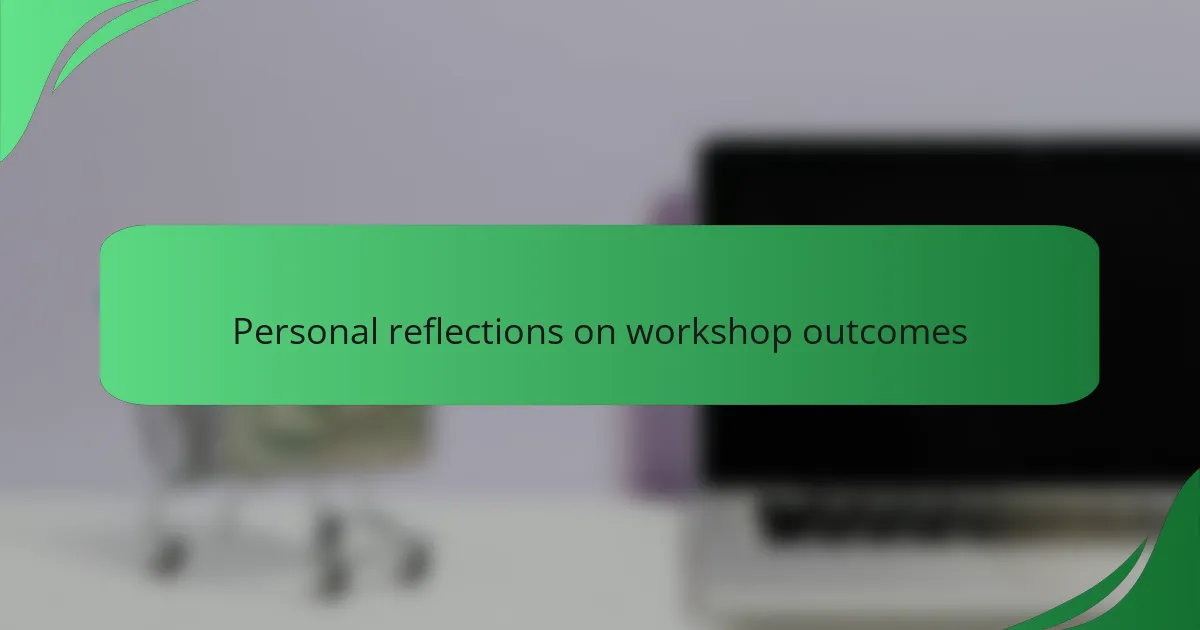
Personal reflections on workshop outcomes
Reflecting on the outcomes of the workshops, I’ve been pleasantly surprised by the depth of connection formed among participants. After the sessions, many shared their realizations about how empathy can dramatically shift design perspectives. One participant told me that for the first time, she actually felt the burden of the users she was designing for. Isn’t it powerful when we can see our work through another’s eyes?
In another instance, the intense discussions led to a collaborative spirit that I hadn’t anticipated. I remember a moment when two designers went off script to brainstorm solutions together, inspired by a user story shared during the workshop. It was a vivid reminder that empathetic design thrives in community—as individuals connect with each other’s stories, collaboration flourishes.
Ultimately, witnessing these transformations left me with a profound sense of hope for the future of design. Participants seemed to embrace the challenge of crafting solutions that genuinely resonate with users, rather than just ticking boxes on a requirements list. Watching this shift unfold was a delightful reminder of why I facilitate these workshops in the first place. What more could we achieve if we all prioritized empathy in our design processes?
